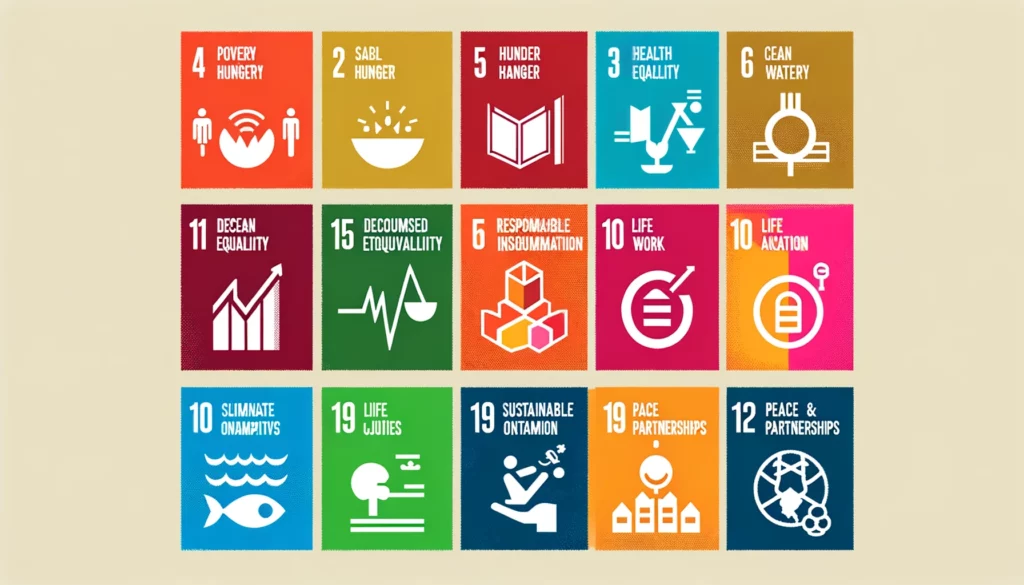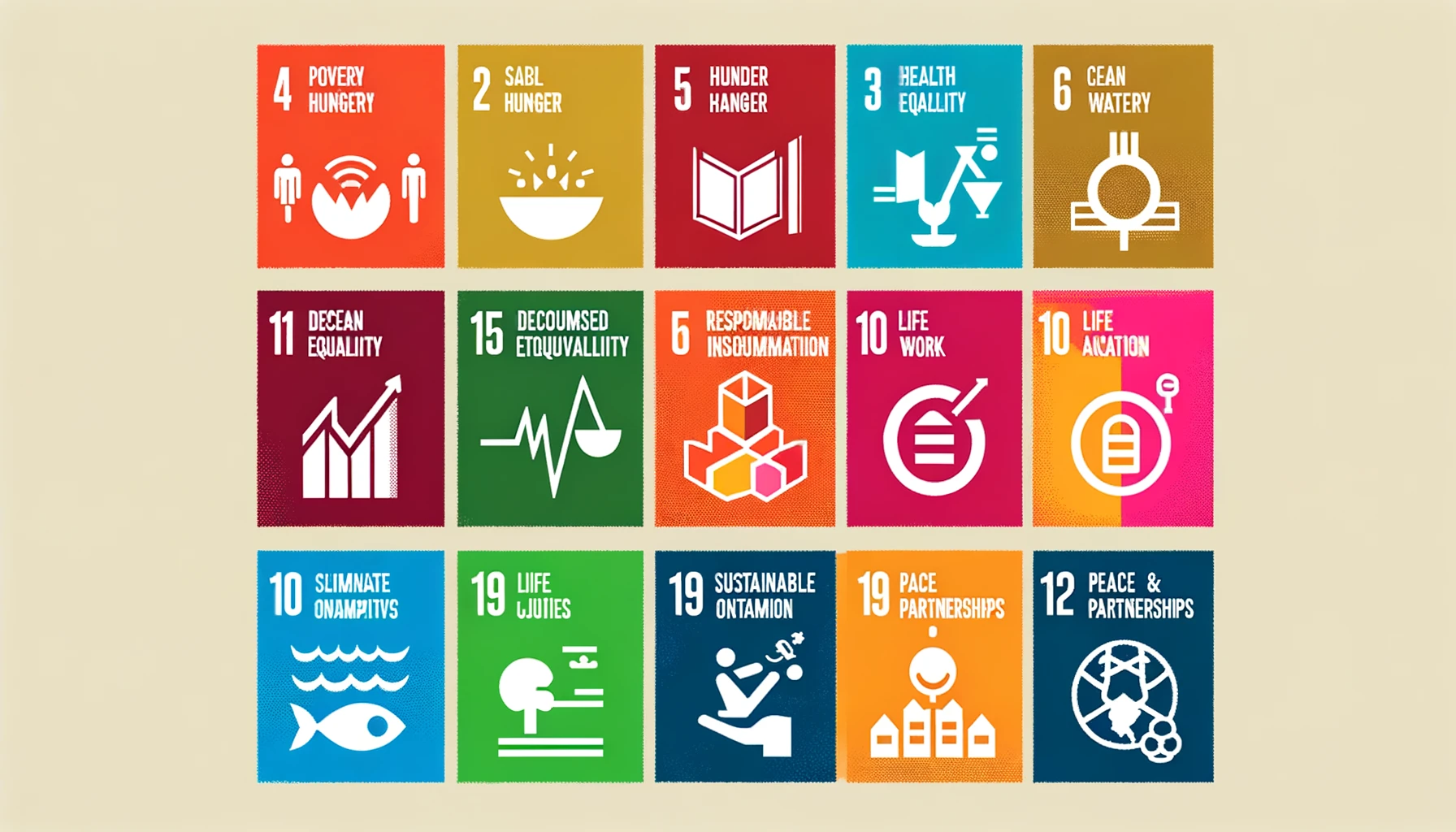Sustainable Development Goals (SDGs) are a universal call to action to end poverty, protect the planet, and ensure that all people enjoy peace and prosperity by 2030. The SDGs were adopted by all United Nations Member States in 2015 as part of the 2030 Agenda for Sustainable Development. This comprehensive framework comprises 17 goals that are integrated and indivisible, balancing the three dimensions of sustainable development: economic, social, and environmental.
Understanding the SDGs
The SDGs build on decades of work by countries and the UN, including the UN Department of Economic and Social Affairs. The 17 goals are interconnected, and often, the key to success on one will involve tackling issues more commonly associated with another. Here’s a closer look at each of the goals:
- No Poverty: End poverty in all its forms everywhere.
- Zero Hunger: End hunger, achieve food security and improved nutrition, and promote sustainable agriculture.
- Good Health and Well-being: Ensure healthy lives and promote well-being for all at all ages.
- Quality Education: Ensure inclusive and equitable quality education and promote lifelong learning opportunities for all.
- Gender Equality: Achieve gender equality and empower all women and girls.
- Clean Water and Sanitation: Ensure availability and sustainable management of water and sanitation for all.
- Affordable and Clean Energy: Ensure access to affordable, reliable, sustainable, and modern energy for all.
- Decent Work and Economic Growth: Promote sustained, inclusive, and sustainable economic growth, full and productive employment, and decent work for all.
- Industry, Innovation, and Infrastructure: Build resilient infrastructure, promote inclusive and sustainable industrialization, and foster innovation.
- Reduced Inequalities: Reduce inequality within and among countries.
- Sustainable Cities and Communities: Make cities and human settlements inclusive, safe, resilient, and sustainable.
- Responsible Consumption and Production: Ensure sustainable consumption and production patterns.
- Climate Action: Take urgent action to combat climate change and its impacts.
- Life Below Water: Conserve and sustainably use the oceans, seas, and marine resources for sustainable development.
- Life on Land: Protect, restore, and promote sustainable use of terrestrial ecosystems, sustainably manage forests, combat desertification, and halt and reverse land degradation and biodiversity loss.
- Peace, Justice, and Strong Institutions: Promote peaceful and inclusive societies for sustainable development, provide access to justice for all, and build effective, accountable, and inclusive institutions at all levels.
- Partnerships for the Goals: Strengthen the means of implementation and revitalize the Global Partnership for Sustainable Development.

The Importance of SDGs
The SDGs are designed to be a “blueprint to achieve a better and more sustainable future for all.” They address the global challenges we face, including those related to poverty, inequality, climate change, environmental degradation, peace, and justice. The goals interconnect, and in order to leave no one behind, we must achieve each goal and target by 2030.
Why Are the Sustainable Development Goals Important?
The SDGs are important because they provide a shared global vision towards sustainable development for all. They are a call to action for countries to work together and address the root causes of poverty and the universal need for development that works for all people.
The SDGs are a global agenda that aims to end poverty, promote prosperity and well-being for all, protect the environment, and address climate change. By achieving the SDGs, we can ensure that the benefits of development reach everyone and not just a select few. They are also a recognition that global challenges are interconnected and that sustainable development must balance social, economic, and environmental sustainability.
Challenges in Achieving the SDGs
Achieving the SDGs is no small feat. It requires collaboration across sectors, from governments to the private sector to civil society. Some of the challenges include:
- Financing: Securing adequate funding to implement the goals.
- Data and Monitoring: Ensuring that progress towards the goals can be accurately measured.
- Policy Coherence: Making sure that policies are aligned and support sustainable development objectives.
- Inclusion: Ensuring that the most vulnerable and marginalized populations are not left behind.
- Climate Change: Addressing the impacts of climate change, which can undermine progress towards many of the goals.
How Can We Contribute?
Every individual, organization, and government has a role to play in achieving the SDGs. Here are a few ways you can contribute:
- Educate Yourself and Others: Learn about the SDGs and spread the word. Educate others about the importance of these goals.
- Support Sustainable Practices: In your daily life, make choices that support sustainability, such as reducing waste, conserving water, and using energy efficiently.
- Advocate for Change: Support policies and initiatives that promote sustainable development.
- Get Involved: Volunteer with organizations that are working towards achieving the SDGs. Participate in local sustainability initiatives.
- Stay Informed: Keep up to date with progress towards the SDGs and hold leaders accountable for their commitments.
Conclusion
The Sustainable Development Goals are an ambitious but achievable blueprint for a better and more sustainable future. They require the collective efforts of everyone – from governments and businesses to civil society and individuals. By understanding the SDGs and actively working towards their achievement, we can ensure a more equitable, prosperous, and sustainable world for all.
Understanding the Sustainable Development Goals (SDGs)
The Sustainable Development Goals (SDGs) are a global initiative designed to address the most pressing issues facing our world today. Established by the United Nations in 2015, these 17 goals aim to end poverty, protect the planet, and ensure prosperity for all by 2030. Each goal is interconnected, recognizing that actions in one area will affect outcomes in others. The SDGs cover a broad range of social, economic, and environmental objectives, from eliminating hunger and achieving gender equality to ensuring clean water and taking urgent climate action. By understanding the SDGs, individuals and organizations can contribute to a sustainable future. The SDGs are not just a policy framework but a call to action for everyone to make a difference in creating a better world.
This concise overview provides an informative and engaging introduction to the SDGs, highlighting their significance and encouraging readers to learn more and take action.
